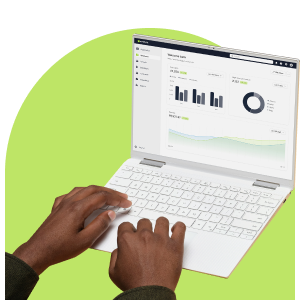Landing pages are one of the cornerstones of purposeful marketing campaigns. Whether driving leads, promoting a product, or encouraging sign-ups, a well-crafted landing page can significantly improve your conversion rates. Walk with us while we discuss current best practices for ensuring your landing pages are functional and highly effective in converting visitors into business clients.
Approach your Landing Page with Purpose
A landing page is a focused, goal-oriented space that guides visitors towards a specific action. Unlike your homepage or other web pages, which may have multiple purposes, a landing page is laser-focused on achieving a single objective—whether that’s capturing leads, making a sale, or promoting a special offer.
The key to a successful landing page lies in its simplicity and clarity. Every element on the page should work towards that one goal, eliminating distractions and providing a seamless path for the user to follow.
Landing pages can vary widely depending on their purpose and the target audience. Each type of landing page is designed to achieve a specific goal, and the choice of landing page depends on the desired outcome of the campaign or initiative.
Here are seven of the most common types of landing pages to help you get started:
- Lead Generation Landing Pages: Collects contact information from visitors in exchange for an offer (like an eBook, webinar, or free trial). Includes a form, strong CTA, and minimal navigation.
- Click-Through Landing Pages: Used to convince visitors to click through to another page (like a sales page). Features persuasive copy, visuals, and a CTA button.
- Sales Landing Pages: Sells a product or service directly, with details, testimonials, pricing, and a strong CTA.
- Product Details Landing Pages: Showcases a specific product, includes images, descriptions, benefits, and reviews.
- Event Registration Pages: Promotes an event, lists details and a registration form.
- Coming Soon Pages: Builds anticipation for a launch with teaser content, a countdown timer, and email capture form.
- Unsubscribe or Exit Pages: Confirms unsubscribes or offers alternatives like email frequency changes or feedback forms.
Current Design Trends for Landing Pages
Current trends focus on efficiency, personalisation, and user experience. Minimalist designs enhance user focus and highlight the core message and CTA. Every element should be intentional and aligned with the landing page’s goal.
With AI and machine learning, personalised dynamic content is now an expectation. Mobile-first design ensures responsiveness and excellent user experience across devices.
Engagement tools like short videos and interactive content (quizzes, sliders) help keep users interested and increase conversions.
Get more guidance on best practices for landing pages, and see some examples of what works and why.
Key Elements to Use when Creating High-Converting Landing Pages
Grab Attention with a Compelling Headline: It should be concise, benefit-focused, and aligned with what brought users to the page.
Write Concise and Persuasive Copy: Keep copy focused, benefit-driven, and aligned with the user’s intent.
Guide the Eye with a Strong Visual Hierarchy: Use larger fonts, contrast, and whitespace to direct attention.
Build Credibility with Trust Signals: Add testimonials, badges, and case studies to build trust.
Create a Clear and Bold CTA: Use prominent, action-oriented buttons like Get Started, Download Now, or Sign Up Today.
Power up your marketing toolkit with a landing page builder that does all the heavy lifting!
Three Effective Ways to Optimise Your Landing Pages
- Use A/B Split Testing Strategically: Test elements like headlines, CTAs, and colours to see what works best. Learn about A/B testing.
- Gain Insights with Heatmaps and Analytics: Understand user behaviour to make informed adjustments. Explore analytics tools.
- Optimise Your Conversion Rates: Ongoing improvement involves analysing behaviour and implementing changes. Read more on CRO.
Drive Results with Efficient and Engaging Landing Pages
By applying the latest trends and using proven tactics, you can create high-performing landing pages that attract, engage, and convert visitors into clients.
Build High-Converting, Responsive Landing Pages with Everlytic
With Everlytic’s intuitive landing page builder, you can quickly and easily build landing pages that achieve even your biggest high-conversion goals. Everlytic’s responsive landing page templates ensure your pages look good on all devices!



